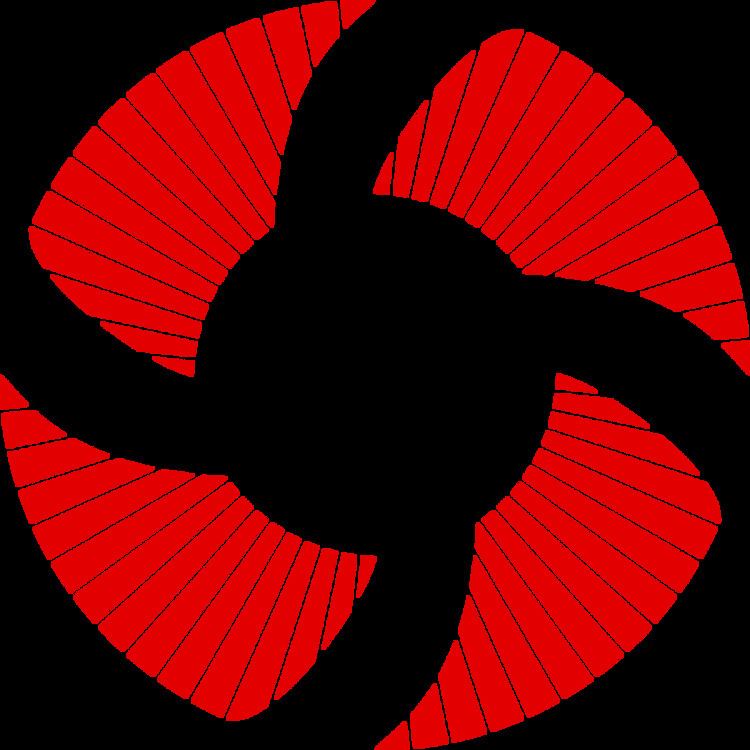 | ||
Kraft durch Freude (German for Strength through Joy, abbreviated KdF) was a large state-operated leisure organization in Nazi Germany. It was a part of the German Labour Front (Deutsche Arbeitsfront, DAF), the national German labour organization at that time. Set up as a tool to promote the advantages of National Socialism to the people, it soon became the world's largest tourism operator of the 1930s.
Contents
KdF was supposed to bridge the class divide by making middle-class leisure activities available to the masses. This was underscored by having cruises with passengers of mixed classes and having them, regardless of social status, draw lots for allocation of cabins.
Another less ideological goal was to boost the German economy by stimulating the tourist industry out of its slump from the 1920s. It was quite successful up until the outbreak of World War II. By 1934, over two million Germans had participated on a KdF trip; by 1939 the reported numbers lay around 25 million people. The organization essentially collapsed in 1939, and several projects, such as the massive Prora holiday resort, were never completed.
Activities
Starting in 1933, KdF provided affordable leisure activities such as concerts, plays, libraries, day trips and holidays. Large ships, such as Wilhelm Gustloff, were built specifically for KdF cruises. They rewarded workers with taking them and their families to the movies, to parks, keep-fit clubs, hiking, sporting activities, film shows and concerts. Borrowing from the Italian fascist organization Dopolavoro "After Work", but extending its influence into the workplace as well, KdF rapidly developed a wide range of activities, and quickly grew into one of Nazi Germany's largest organizations. The official statistics showed that in 1934, 2.3 million people took KdF holidays. By 1938, this figure rose to 10.3 million.
Two weeks after the Anschluss, when SS-Gruppenführer Josef Bürckel became Reichskommissar für die Wiedervereinigung as well as Gauleiter, the first five trains with some 2,000 Austrian workers left for Passau, where they were ceremonially welcomed. While Bürckel announced that he did not expect all KdF travelers to return as National Socialists, he did expect them to look him in the eyes and say, "I tried hard to understand you."
At the outbreak of war, holiday travel was stopped. Until then KdF had sold more than 45 million package tours and excursions. By 1939, it had over 7,000 paid employees and 135,000 voluntary workers, organized into divisions covering such areas as sport, education, and tourism, with wardens in every factory and workshop employing more than 20 people.
The National Socialists sought to attract tourists from abroad, a task performed by Hermann Esser, one of the Ministry of Public Enlightenment and Propaganda's (Ministerium für Volksaufklärung und Propaganda) secretaries. A series of multilingual and colorful brochures, titled "Deutschland", advertised Germany as a peaceful, idyllic, and progressive country, on one occasion even portraying the ministry's boss, Joseph Goebbels, grinning in an unlikely photo series of the Cologne carnival.
The KdF was awarded the 1939 Olympic Cup by the International Olympic Committee.
The "People's Car"
The KdF's most ambitious programme for German workers was set up for production of an affordable car, the "KdF-Wagen", which later became the Volkswagen Beetle. ("Volkswagen" being German for "People's Car") This was originally a project undertaken at Hitler's request by the car-maker Ferdinand Porsche. When the German car industry was unable to meet Hitler's demand that the Volkswagen be sold at 1,000 Reichsmarks or less, the project was taken over by the German Labour Front (Deutsche Arbeitsfront, DAF). Now working for the DAF, Porsche built a new Volkswagen factory at Fallersleben, at a huge cost which was partly met by raiding the DAF's accumulated assets and misappropriating the dues paid by DAF members. The Volkswagen was sold to German workers on an installment plan where buyers of the car made payments and posted stamps in a stamp-savings book, which when full, would be redeemed for the car. Due to the shift of wartime production, no private citizen ever received a "Kdf-Wagen" (although after the war, Volkswagen did give some customers a 200 DM discount for their stamp-books). The entire project was financially unsound, and only the corruption and lack of accountability of the Nazi regime made it possible. The Beetle factory was primarily converted to produce the Kübelwagen (the German equivalent of the jeep). The few Beetles that were produced went to the diplomatic corps and military officials.
After work
Feierabendgestaltung (English: After-work organization) was the "planned" structuring of daily leisure time within the KdF program, attempted by the National Socialists through individual state agencies, including the Office for After-Work Activity (Amt Feierabend) and the Office for Popular Education (Amt Volksbildungswerk). In National Socialist usage, the term "after-work organization" was increasingly applied to the entire area of organized leisure activity (including vacations and weekends).
